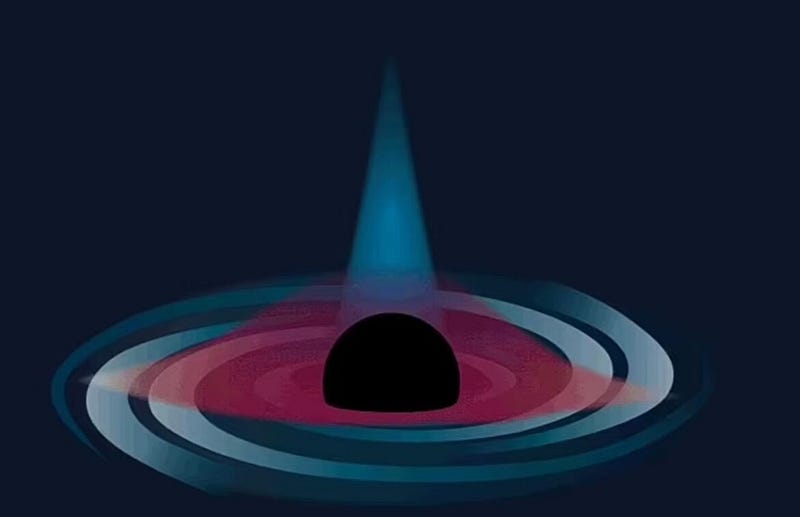Groundbreaking Discovery: Light Detected Behind a Black Hole
Written on
Chapter 1: The Historic Discovery
Astronomers have achieved a remarkable feat by detecting light emanating from behind a supermassive black hole, reinforcing Einstein's theories. This groundbreaking finding was made by a research team led by Dan Wilkins from Stanford University while investigating the black hole’s corona, the source of intense X-ray emissions.

The black hole is situated at the core of the spiral galaxy known as I Zwicky 1, located approximately 800 million light-years from Earth. Within this galaxy lies a black hole that is an astonishing 10 million times heavier than our Sun. As Wilkins and his team examined the corona—where X-rays are produced—they uncovered that as matter spirals into the black hole, it forms a disc that rotates at nearly the speed of light, reaching temperatures in the billions of degrees.
Section 1.1: Understanding the Black Hole's Corona
The corona generates powerful magnetic fields that twist into intricate knots due to the black hole's rapid rotation. Occasionally, when these twisted fields snap, they release vast amounts of energy, resulting in X-ray emissions that can escape into space. Some of these intense X-ray flares were so brilliant that they illuminated the material falling into the black hole, allowing them to reflect back.

Section 1.2: The Unexpected Observation
Utilizing the ESA's XMM-Newton and NASA's NuSTAR space telescopes, scientists recorded these X-ray flares. In an unexpected turn of events, the telescopes detected X-rays reflecting off material situated behind the black hole. This observation was surprising because, according to traditional understanding, light entering a black hole cannot escape. The phenomenon can be explained by Einstein’s General Theory of Relativity, which portrays gravity as a curvature in spacetime.
> “Any light that goes into that black hole doesn’t come out, so we shouldn’t be able to see anything that’s behind the black hole. The reason we can see is that the black hole is warping space, bending light, and twisting magnetic fields around itself,” explained Dr. Dan Wilkins, affiliated with the Kavli Institute for Particle Astrophysics and Cosmology.
Chapter 2: Unraveling the Mystery
To determine that their telescopes captured light from behind the black hole, scientists relied on two key observations.
The first clue was the specific colors of the X-rays emitted from the corona. As this light navigates around the black hole, its colors undergo slight alterations. By analyzing the data, astronomers identified different X-ray colors, indicating that the light was indeed coming from behind the black hole.
The second clue involved timing; light from the far side of the black hole would take longer to reach Earth compared to light from the front side. This delay provided further confirmation that they were observing light from behind the black hole.
Once again, Einstein’s General Theory of Relativity stood validated. This newly detected light offers insights into the surroundings of the black hole, allowing astronomers to create a three-dimensional map of its vicinity. This pivotal study was published in the journal Nature on July 28, 2021.